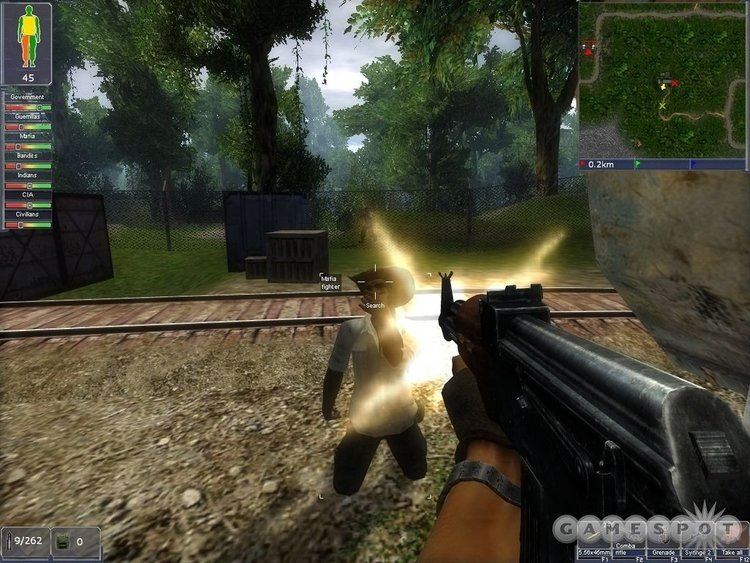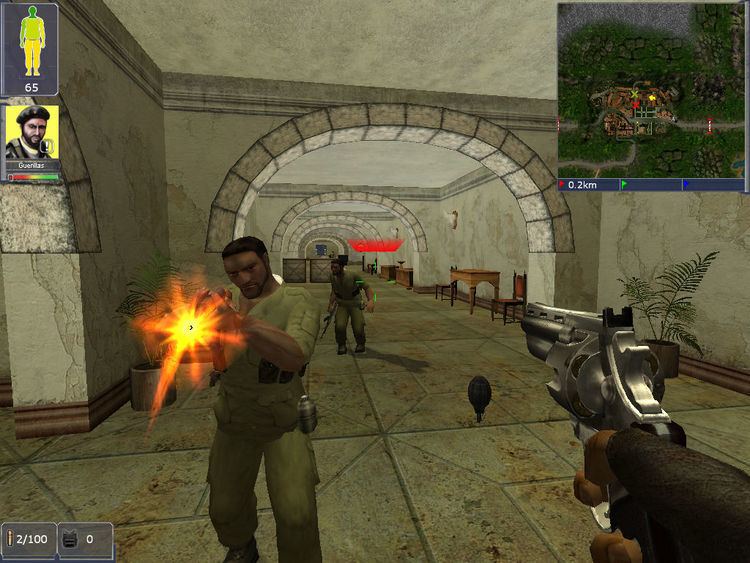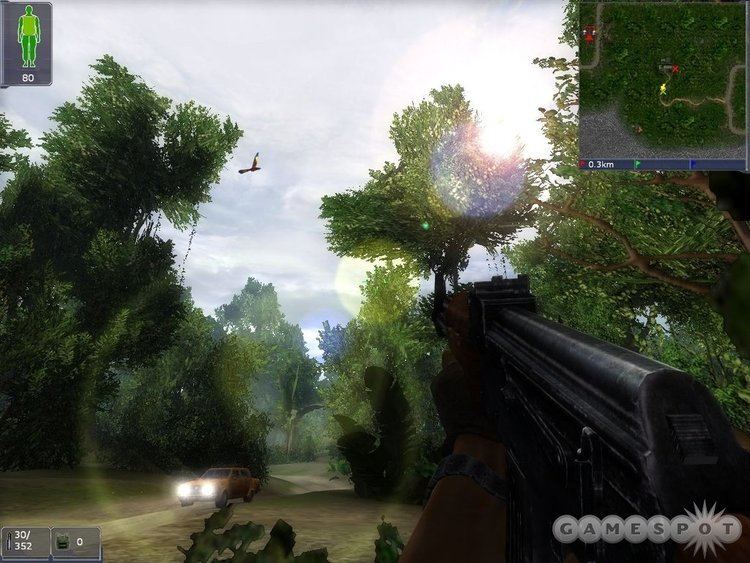6.8 /10 1 Votes6.8
61% GameFAQs Developer Deep Shadows | 7/10 GameSpot 7/10 IGN Initial release date 20 May 2005 | |||||||||||||||||||||||||||||||||
 | ||||||||||||||||||||||||||||||||||
Release date(s) PAL: May 20, 2005NA: June 6, 2005 Similar Atari games, First-person shooter games | ||||||||||||||||||||||||||||||||||
Playing boiling point road to hell the don s stretch goals
Boiling Point: Road to Hell (Xenus: Точка кипения, Xenus: Boiling Point) is a video game developed by the Ukrainian based game studio Deep Shadows and published in 2005 by Atari. Boiling Point's gameplay is a combination of both FPS and role-playing video game mechanics. Critical response upon its release was, with few exceptions, lukewarm. This was attributed to the many technical issues that plagued the game's release: bugs, glitches and choppy performance. Patches have been released that address many, but not all, of these deficiencies. Deep Shadows released a successor in 2009 called White Gold: War In Paradise, and another game with the same engine called The Precursors.
Contents
- Playing boiling point road to hell the don s stretch goals
- Boiling point road to hell playthrough walkthrough part 1 no commentary
- Premise
- Gameplay
- Plot Synopsis
- Factions
- Reception
- Trivia
- References

Boiling point road to hell playthrough walkthrough part 1 no commentary
Premise

Boiling Point's protagonist is Saul Myers (whose character model is based on actor Arnold Vosloo), a veteran of the French Foreign Legion living abroad in Paris. Myers' daughter, Lisa, is a globetrotting journalist. Lisa runs afoul of and is kidnapped by persons unknown while working in the fictional, troubled South American nation of Realia. News of this is quickly relayed to Myers, who hastily departs for Realia, where he must tangle with local politics and the criminal underworld while trying to track down his missing daughter.
Gameplay

The game is set in a Realian valley, an undivided 25x25km (625 km2) map. There are no in-game loading screens or level transitions. The geography of the valley itself is tropical jungle. There are two primary cities: Puerto Sombra in the west, which is in the hands of the local government, and Pueblo Faro in the east, which is held by communist insurgents (see: Factions). Scattered throughout the rest of the valley are various bases, plantations, villages, and estates. Due to the large size of the game world there are several modes of transportation available: cars, trucks, tanks, planes, helicopters, and boats.

Gameplay is a hybrid of FPS and RPG mechanics. Character advancement is skill-based, with specific skills either being enhanced through practice, or atrophied via disuse. The list of skills is limited, and is constructed of weapon proficiencies and physical ability. However, killing everything in sight is not the goal of the game. Saul Myers' goal is to find his daughter, so he will need to talk to many people to gather the necessary information to unravel the mystery of her disappearance. Much of this information can only be purchased with the Realian currency, and the primary means of generating income is by completing missions for the game's various factions.

There are no predefined enemies in the game except for hostile animals such as snakes and jaguars in the wilderness. There are many NPCs, with almost all of them being neutral at the start. There are six factions in the game: the Realian government, the communist guerrillas, the mafia, local Indian tribes, unaffiliated bandits, and an American CIA presence. Civilians are also considered a faction for the purposes of calculating Myers' "reputation", which is variable and dynamic. Completing missions for a faction's rivals will lower Myers' reputation with them, and hostile factions will shoot on sight. There are, however, methods of repairing Myer's reputation.
Plot Synopsis
Upon arriving in Realia, Meyers interrogates Lisa's boss, the editor of the newspaper at which she worked. He points him in the direction of Don Pedro, an influential local crime lord with connections to every illegal activity in the country, and apparently the last person to see Lisa alive. Meyers storms Don Pedro's compound, but is ambushed by Don Pedro's soldiers inside the Don's office. However, the Don spares Meyer's life, and informs him that Lisa and he were on friendly terms, that she was interviewing him for a story, and that the last time he saw her, she was returning to town to speak to the editor.
Realizing that the editor deceived him, Meyers returns to the newspaper office and threatens the editor at gunpoint. Just as the editor is about to confess everything, he is killed by a sniper rifle shot from across the street. The killer, a well-dressed professional assassin, flees from the scene. Meyers tracks the killer down and kills him.
After tracking several leads, Meyers eventually discovers that a group of mysterious soldiers in black uniforms are behind everything, and are responsible for mass kidnappings and other unusual events in Realia. Meyers learns that the leader of the Black Soldiers is named Don Diego, and that he is apparently turning people into zombies.
After saving one of the kidnapped people from the Black Soldiers, Meyers learns that Don Diego is really Don Pedro. Meyers tracks Pedro to his island fortress, kills all of his bodyguards, and confronts Pedro, shooting him in the leg.
Don Pedro confesses everything. The real mastermind behind the Black Soldiers is Alberto Caruzzo, a wealthy philosopher who Meyers met early in the game inside the Puerto Sombra bar. Caruzzo is a devotee of Nikola Tesla, specifically Tesla's research into the Mindscape. Caruzzo has built a massive antenna capable of influencing the Mindscape, which gives him the power to control people's minds. Lisa was kidnapped by Caruzzo's men for getting too close to the truth. She is apparently immune to mind control, so Caruzzo is experimenting on her to find out why.
Meyers storms Caruzzo's massive underground volcano base, the Black Tower, and eventually finds his daughter attached to machinery deep inside the laboratories. Caruzzo's chief scientist informs Meyers that Lisa cannot be unplugged from the machinery, or else it will kill her, unless Meyers destroys the mind-control antenna.
Caruzzo appears on a large video screen and confronts Meyers. Caruzzo laments the plight of the people in the third world, killing each other in an endless war, thanks to Westerners like Meyers and their demand for cocaine. He describes his plan to bring about world peace by using his antenna to control people's minds and remove hatred, war, and poverty. Meyers refuses to debate Caruzzo, telling him that he made a mistake when he kidnapped Meyer's daughter.
Meyers battles Caruzzo's elite soldiers and destroys the Black Tower antenna, causing a massive explosion that destroys the volcano and Caruzzo along with it. Meyers, Lisa, and the chief scientist fly off into the sunset inside a helicopter. Lisa informs her father that she's thinking of quiting journalism to become a paramedic, and that she's planning to head for Nepal next.
Factions
Government: The Realian military and police force. They control the city of Puerto Sombra, in addition to bases and outposts scattered throughout the valley. They are primarily enemies of both the Guerrillas and the Mafia, but are largely ambivalent to the Indians and Bandits.
Guerrillas: Communist insurgents. They control the city of Pueblo Faro, in addition to a maintaining a strong military presence concentrated in bases and outposts all throughout the valley. They are primarily enemies of the Government and the Mafia, but are generally on good terms with the Indians.
Mafia: The criminal underworld. Their business consists primarily of the growth, manufacture, and trafficking of illegal narcotics. They control various plantations and bases throughout the valley, and they maintain a small presence in both of the two main cities. They are at war with both the Government and the Guerrillas, in addition to being generally despised by the smaller factions.
Bandits: Smalltime thugs, thieves, and hitmen. They operate on the fringes of both Puerto Sombra and Pueblo Faro. While not in open war with any other faction, they are particularly disliked by both the Indians and the Civilians.
Indians: Indigenous tribes of the valley. The Indians are concentrated in several villages, usually far from the bigger cities. The Indians are preyed upon by the Mafia, and have a great distrust for the Government. Their relationship with the Guerrillas is more amicable.
CIA: The United States' Realian presence. Their spies and operatives can be found in both the major cities and hidden amidst the jungle. They are loosely allied with the Government, and primarily target both the Guerrillas and the Mafia in their hostile operations.
Civilians: The good Realian people. They populate Puerto Sombra and Pueblo Faro, and operate the various roadside markets and gas stations. Most of the game's commerce is handled by the Civilians. In open war with nobody, they still have a particular dislike for the Bandits.
Reception
Due to the previously mentioned buggy nature of the game unpatched, reviewers who rated the game when it first came out were heavily critical of the game, with a reviewer from PC Gamer magazine saying "Unless it receives some extreme patching, don't bother with this game." At the same time, reviewers who either looked past the buggy issues, or were late to review and therefore able to patch the game to the reportedly stable 2.0 version, were largely positive, with a reviewer from gamesTM saying "Atari has landed itself an absolute classic here. A must-have - no questions asked." Edge magazine would bemusedly quote from the patch notes a few months later and observe that the removal of the game's bugs had removed much of the game's limited entertainment value.
